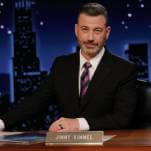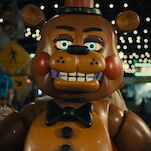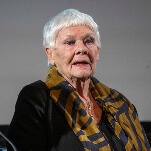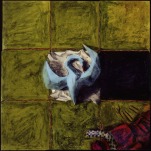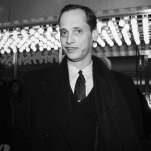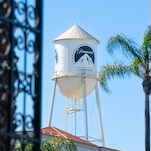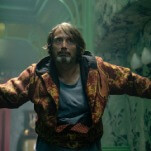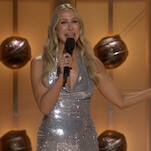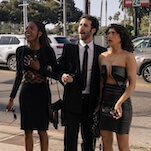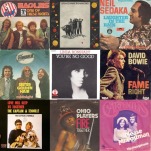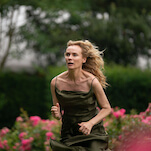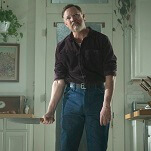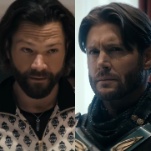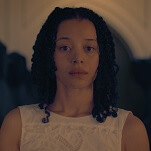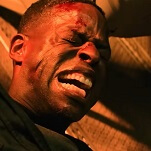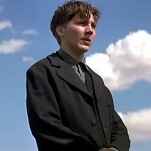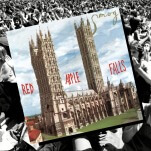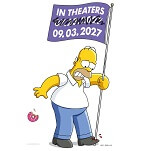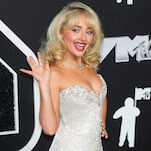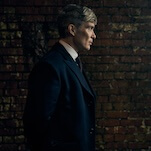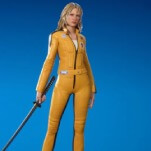In his directorial debut, underrated satirist George Axelrod takes shots at seemingly every American institution from the church to show business, but he saves his most potent vitriol for the ruthless high-school caste system. Just a few years away from playing a high-school teacher in Pretty Maids All In A Row, a suspiciously middle-aged Roddy McDowall stars as a brilliant, mysterious high-schooler who serves as a psychotic fairy godfather of sorts for deeply troubled teen queen Tuesday Weld. The twisted relationship between the heartbreakingly gorgeous Weld and the mysterious loner McDowall eerily anticipates both the central dynamic in Heathers and Weld’s equally deranged affair with Anthony Perkins in the simpatico 1968 black comedy Pretty Poison.
A benchmark in counterculture filmmaking, Lindsay Anderson’s portrait of a revolt staged at a British boys’ school converts the abuses heaped on school kids into a clanking metaphor for the repression of British society in general. A thousand years of tradition goes up in smoke as rebellious senior Malcolm McDowell turns on the “whips,” a group of fascist students who uphold the school’s draconian rules by caning those who break them. After coming upon a cache of weapons, McDowell and his buddies, referring to themselves as “The Crusaders,” start taking out authority figures from the rooftops, sparking a full-scale rebellion. It’s like the climax to Jean Vigo’s classic 1933 film Zero For Conduct, only with bullets instead of pillow feathers.
In Roger Vadim’s deliciously warped black comedy, a seldom-better Rock Hudson plays a jovial high-school coach/faculty advisor so beloved that not even his unfortunate predilection for murdering fetching female students can dim his popularity. Star Trek creator Gene Roddenberry produced and scripted this cheerfully misogynistic adaptation of Francis Pollini’s darkly comic novel. The Osmonds, of all people, provided the theme song. Legendary libertine Vadim refuses to cast judgment on the sexual shenanigans of a hormone-crazed Southern California high school so debauched and surreal that it all but qualifies as an alternate universe. It’s one of cinema’s few ambiguous, almost-positive portrayals of serial killing.
As part of his perverse quest to create the most visually and aurally oppressive movie possible, director Alan Parker stocked his feature-length music video with unrelentingly grim images of life under totalitarian rule. Granted, there’s really no way to find a sunny interpretation of Pink Floyd’s “Another Brick In The Wall Part 2,” with its lobotomized chorus of children chanting, “We don’t need no education. We don’t need no thought control.” But Parker goes further than depicting “dark sarcasm in the classroom”; his conformist kids are lined up on a factory belt and fed through a meat grinder, where their innards are presumably processed for neo-Nazi cookouts.
The key element in John Hughes’ sinister plot to control the minds of impressionable, self-absorbed teenagers across America, The Breakfast Club offers a collection of high-school stereotypes so broad—The Jock, The Geek, The Princess, The Judd Nelson, etc.—that everyone can identify with at least one of them. Gathered in the world’s most luxurious public-school library for Saturday detention, they each confess (some sooner, some later) that teenage life isn’t all it’s cracked up to be. Even the Jock (Emilio Estevez) and the Princess (Molly Ringwald), the symbolic King and Queen of the school, tearfully admit that the pressure of being on top outflanks the benefits. And as in all Hughes movies, the authority figure (Paul Gleason) is a contemptible boob.
6. Lean On Me (1989)
The story of Joe Clark, a New Jersey inner-city principal who saved a school from getting shut down by the state, is supposed to be inspiring; it’s directed by John G. Avildsen, who made Rocky and The Karate Kid, and it stars Morgan Freeman, a presence of great warmth and quiet authority. Yet who takes inspirations from a bat-wielding thug who goes to Machiavellian extremes just to achieve higher test scores? The real Clark went on to work at a juvenile detention center; it probably wasn’t much of an adjustment for him.
7. Battle Royale (2000)
In the not-so-distant future, with violence and rebellion on the rise among disenchanted Japanese school kids, a fascist government passes a sensible measure: Gather a randomly chosen group of ninth-grade students, plop them on a deserted island, and force them to fight to the death. The one who survives will stand as a symbolic example to other teenagers about how far Big Brother is willing to go to keep them in line. Kinji Fukasaku’s bloody satire has the odd distinction of having established a significant cult following in the U.S.—through imported DVDs and Flaming Lips concerts—without official distribution in any capacity. Apparently the price tag was exorbitantly high—but never underestimate an audience’s desire to watch teenagers off each other.
8. Ginger Snaps (2000)
Since Buffy The Vampire Slayer, the ultimate metaphor for the horrors of high-school life, missed an adequate big-screen adaptation, this clever, resourceful low-budget Canadian werewolf film will have to suffice. Owing much to Carrie, the film follows two sisters (Emily Perkins and Katharine Isabelle) who are a few years late to menstruation, though at least they’re spared the indignity of getting pelted with tampons. Instead, a late-night prank on one of the school’s “popular” girls goes awry when Isabelle has her first period and gets savagely mauled by a wild animal. Her transformation into a confident, insatiably aggressive sexual predator gives her the chance to exact some revenge on the vicious kids who wronged her.
9. Chain Camera (2001)
For his one-of-a-kind social experiment, documentary filmmaker Kirby Dick (This Film Is Not Yet Rated) handed out 10 palm-sized video cameras to students at John Marshall High School, an ethnically diverse institution just outside Hollywood. After one week, the cameras were passed along to another 10 kids, and so on; a year later, Dick whittled down more than 700 hours of footage into 16 often startling mini-diaries. The subjects boast a wide range of backgrounds and personalities, but one of their remarkable commonalities is the small role that school plays in how their lives function. Whatever happens in the classroom seems to have no relation to what happens outside; they only feel free to express who they are in the safe quarters of their bedrooms and living rooms.
10. Donnie Darko (2001)
A strain of nostalgia runs through Richard Kelly’s cult classic, which is rife with fond references to ‘80s films (E.T., Back To The Future, Blue Velvet) and music (Tears For Fears, Echo & The Bunnymen, Duran Duran), but its depiction of high school is unambiguously damning. Steeped in the Reagan years, the film takes place in a Virginia town that buries its dysfunction in conservative rhetoric and quick-fix New Age cures. In the classroom, the lessons of free-spirited English teacher Drew Barrymore are purged in favor of an empty-headed curriculum promoted by New Age guru Patrick Swayze, who reduces all human emotions to love and fear. Swayze’s vast enterprise includes a kiddie-porn ring, which puts a pretty fine point on the situation.
11. Elephant (2003)
On any other day, the high-school life depicted in Gus Van Sant’s Elephant wouldn’t be so bad. Sure, the expected caste system is in place, and one wallflower in particular absorbs abuse from her peers, but Van Sant’s dreamy meditation on the Columbine massacre floats through the halls as if the dolly tracks were laid down on heavenly clouds. Then a couple of outcasts in fatigues breeze in during lunch break, and an average day turns into a bracing nightmare. It would be easy to blame the institutionalized nature of high school for the crime, just like it’s easy to point the finger at video games, Marilyn Manson records, gun proliferation, and other popular scapegoats dredged up at the time. But in offering no causes, no solutions, and no moral or intellectual perspective on Columbine, Van Sant creates a poetic memorial to the poor kids who didn’t cut class that day.
12. Brick (2006)
In retrospect, it’s amazing that no one ever thought to set a classic piece of detective noir in a high school until now: What better place for a genre that plays off heightened emotions, deep-seated cynicism, and criminal networks of sinister omnipresence? Rian Johnson’s audacious debut feature follows a teenage gumshoe (Joseph Gordon-Levitt) as he tracks down his missing ex-girlfriend, whom he suspects has run afoul of a gangly hood (Lukas Haas) who traffics drugs through the school. All the standard noir archetypes are in the place—including two femmes fatale, a kingpin, and his muscle—but the players are still a bunch of high-school kids, in spite of Johnson’s revival of ancient gumshoe language.

